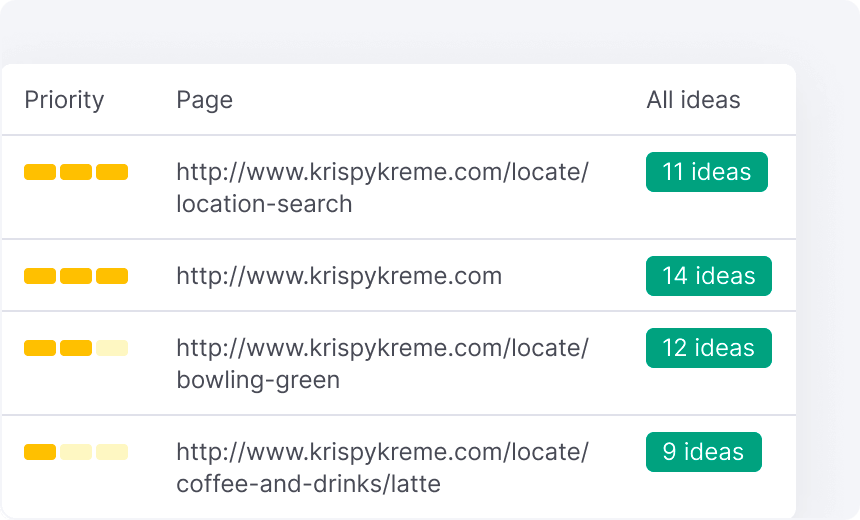Introducing the Unconventional Mediums in Google Analytics Beyond Default Settings
In the world of electronic analytics, Google Analytics stands as a cornerstone for services looking for to understand their online presence. By venturing past the surface area and diving into the complexities of social media data, e-mail project performance, recommendation traffic resources, straight web traffic patterns, and customized channel groups, a prize trove of information waits for those ready to accept a more nuanced approach.

Leveraging Social Media Insights
Periodically overlooked, yet greatly important, is the technique of leveraging social networks understandings within the realm of Google Analytics. By integrating information from platforms like Facebook, Twitter, Instagram, and LinkedIn into Google Analytics, organizations can acquire a much deeper understanding of their target market and the effectiveness of their social networks projects.
Through this combination, marketers can track and examine user habits on their internet site that stems from social media platforms. They can recognize which social media sites channels are driving the most traffic, which material is reverberating with the target market, and which projects are converting the most leads. This insight permits data-driven choices to maximize social media strategies and enhance general advertising efficiency.
In addition, by combining social media insights with Google Analytics, companies can produce extra targeted and customized campaigns - what is not considered a default medium in google analytics. They can utilize market info, rate of interests, and on-line habits collected from social networks to fine-tune their target market segmentation and provide tailored messages that resonate with specific customer groups. This targeted approach can lead to greater involvement, raised conversions, and inevitably, enhanced roi
Discovering Email Campaign Performance
Discovering Email Project Performance includes analyzing essential metrics and efficiency indicators to examine the performance of email advertising initiatives. When delving into e-mail project performance, it is important to analyze metrics such as open rates, click-through rates, conversion prices, and unsubscribe prices. By analyzing these metrics, marketing professionals can adjust their e-mail campaigns for much better interaction and efficiency.
Studying Referral Traffic Sources
After examining the efficiency of e-mail campaigns through essential metrics such as open rates and conversion prices, the following critical step is analyzing recommendation web traffic resources in Google Analytics to recognize where internet site site visitors are originating from and how they interact with the site. Referral traffic sources refer to the sites that guide individuals to your site with clickable links. By delving into this data, businesses can gain insights right into which exterior systems are driving website traffic to their website, whether it be social media sites systems, partner sites, or on the internet directories.
It assists organizations determine high-performing reference sources that add considerably to internet site traffic and conversions. Google Analytics uses comprehensive records on referral web traffic, permitting companies to track the see this page efficiency of each referral source properly and make data-driven decisions to improve their on-line presence.
Exploring Direct Web Traffic Patterns
Checking out the straight website traffic patterns in Google Analytics provides important understandings right into customer actions and the effectiveness of campaigns - what is not considered a default medium in google analytics. Direct web traffic refers to visitors that come down on a website by directly typing the URL into their web browser, utilizing book markings, or clicking untagged web links. Understanding direct traffic patterns can assist marketing professionals review the influence of offline advertising and marketing initiatives, brand name recognition, and the efficiency of word-of-mouth references
By diving into direct traffic data, businesses can reveal crucial information regarding user intent and brand name commitment. Assessing the habits of direct visitors, such as the web pages they visit, the time invested this article on website, and the conversion rate, can offer a deeper understanding of customer involvement and the general efficiency of the website in transforming site visitors into customers.
In addition, tracking straight web traffic patterns over time permits services to determine trends, seasonality results, and the success of particular campaigns or promos in driving direct visits. This details can then be used to improve advertising strategies, maximize site content, and improve the overall customer experience to make straight from the source best use of conversions.
Using Custom Network Groupings
Utilizing custom-made channel groups in Google Analytics allows services to categorize and examine their site web traffic based on certain criteria, supplying valuable insights for maximizing marketing approaches. Custom network groups allow firms to create their own tailored groupings of web traffic resources, such as social media, organic search, e-mail projects, and referral web traffic. By specifying these groupings, companies can get a much deeper understanding of how different advertising and marketing channels add to their website traffic and conversions.
This function is especially valuable for businesses with diverse advertising methods throughout numerous platforms. A business running both paid and organic social media campaigns can separate in between the 2 to examine their specific efficiency properly. In addition, personalized network groups can aid recognize any type of ignored or taken too lightly website traffic resources that might be driving useful interaction.
Final Thought

By venturing beyond the surface area and delving into the details of social media data, e-mail project performance, recommendation website traffic sources, direct website traffic patterns, and customized network groups, a treasure trove of details waits for those prepared to accept an extra nuanced approach. They can determine which social media networks are driving the most traffic, which web content is resonating with the audience, and which projects are transforming the most leads.After evaluating the performance of email projects via vital metrics such as open rates and conversion rates, the next vital action is analyzing referral web traffic resources in Google Analytics to recognize where internet site visitors are coming from and how they communicate with the site. Custom-made network groups enable firms to develop their own customized collections of traffic resources, such as social media, natural search, e-mail campaigns, and reference traffic. By leveraging social media insights, discovering email campaign performance, evaluating recommendation web traffic sources, exploring direct traffic patterns, and utilizing custom network groups, marketers can gain valuable understandings right into their on the internet existence.